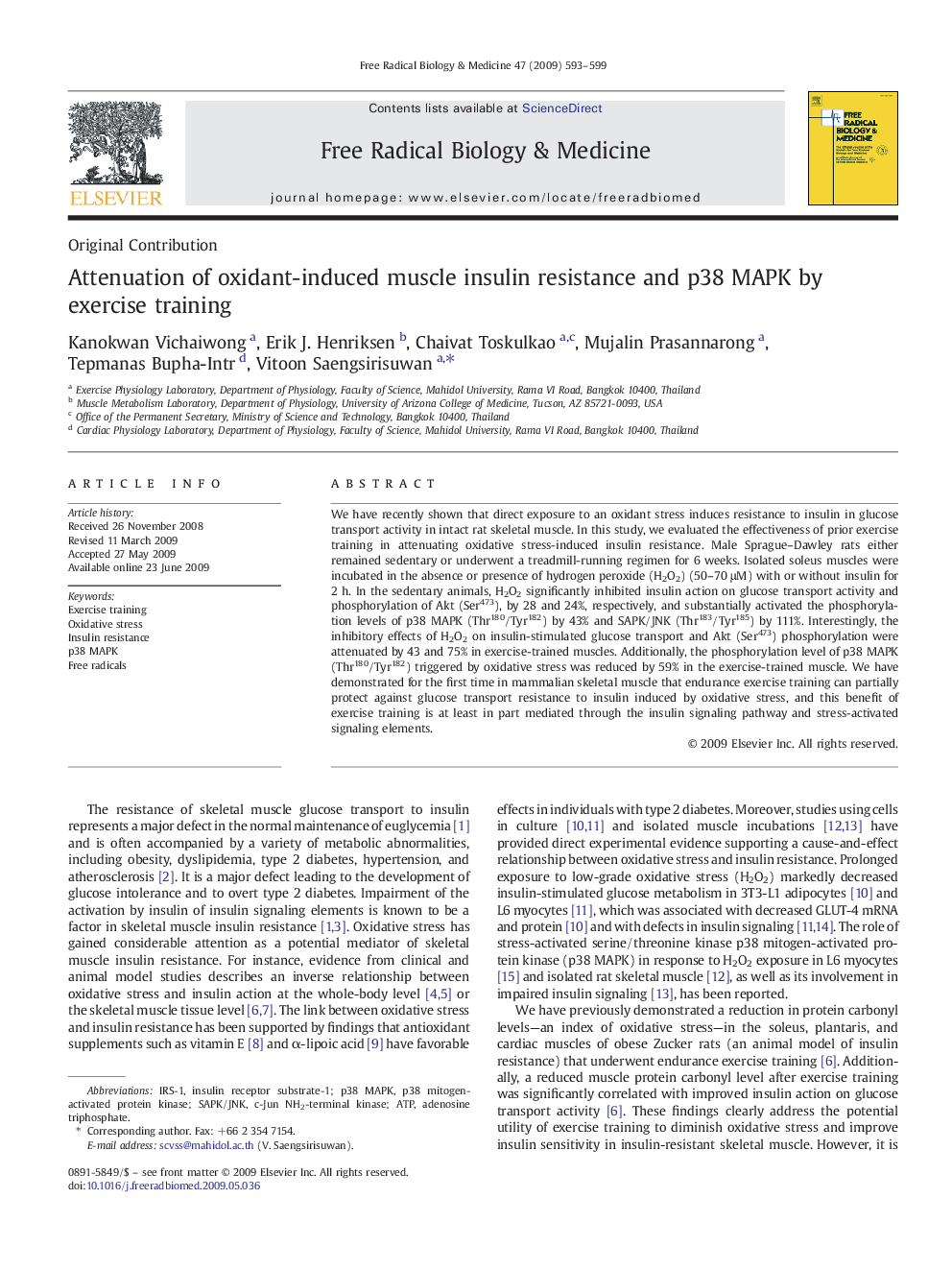| Article ID | Journal | Published Year | Pages | File Type |
|---|---|---|---|---|
| 1910531 | Free Radical Biology and Medicine | 2009 | 7 Pages |
We have recently shown that direct exposure to an oxidant stress induces resistance to insulin in glucose transport activity in intact rat skeletal muscle. In this study, we evaluated the effectiveness of prior exercise training in attenuating oxidative stress-induced insulin resistance. Male Sprague–Dawley rats either remained sedentary or underwent a treadmill-running regimen for 6 weeks. Isolated soleus muscles were incubated in the absence or presence of hydrogen peroxide (H2O2) (50–70 μM) with or without insulin for 2 h. In the sedentary animals, H2O2 significantly inhibited insulin action on glucose transport activity and phosphorylation of Akt (Ser473), by 28 and 24%, respectively, and substantially activated the phosphorylation levels of p38 MAPK (Thr180/Tyr182) by 43% and SAPK/JNK (Thr183/Tyr185) by 111%. Interestingly, the inhibitory effects of H2O2 on insulin-stimulated glucose transport and Akt (Ser473) phosphorylation were attenuated by 43 and 75% in exercise-trained muscles. Additionally, the phosphorylation level of p38 MAPK (Thr180/Tyr182) triggered by oxidative stress was reduced by 59% in the exercise-trained muscle. We have demonstrated for the first time in mammalian skeletal muscle that endurance exercise training can partially protect against glucose transport resistance to insulin induced by oxidative stress, and this benefit of exercise training is at least in part mediated through the insulin signaling pathway and stress-activated signaling elements.
